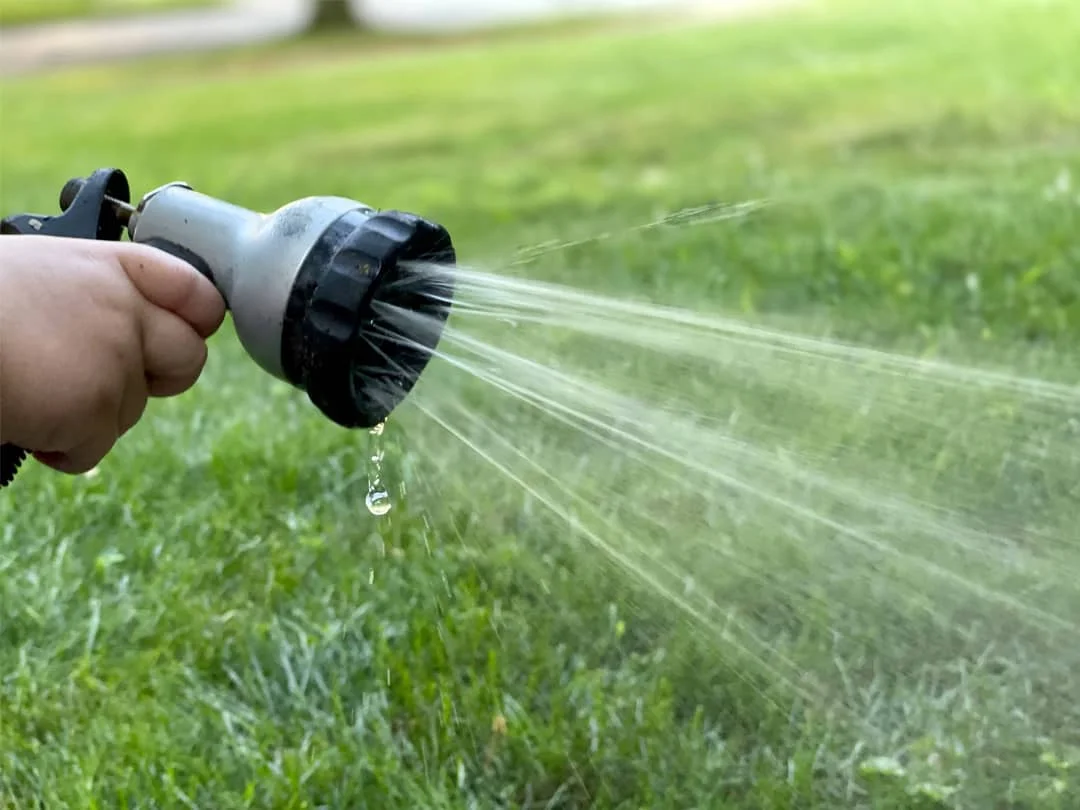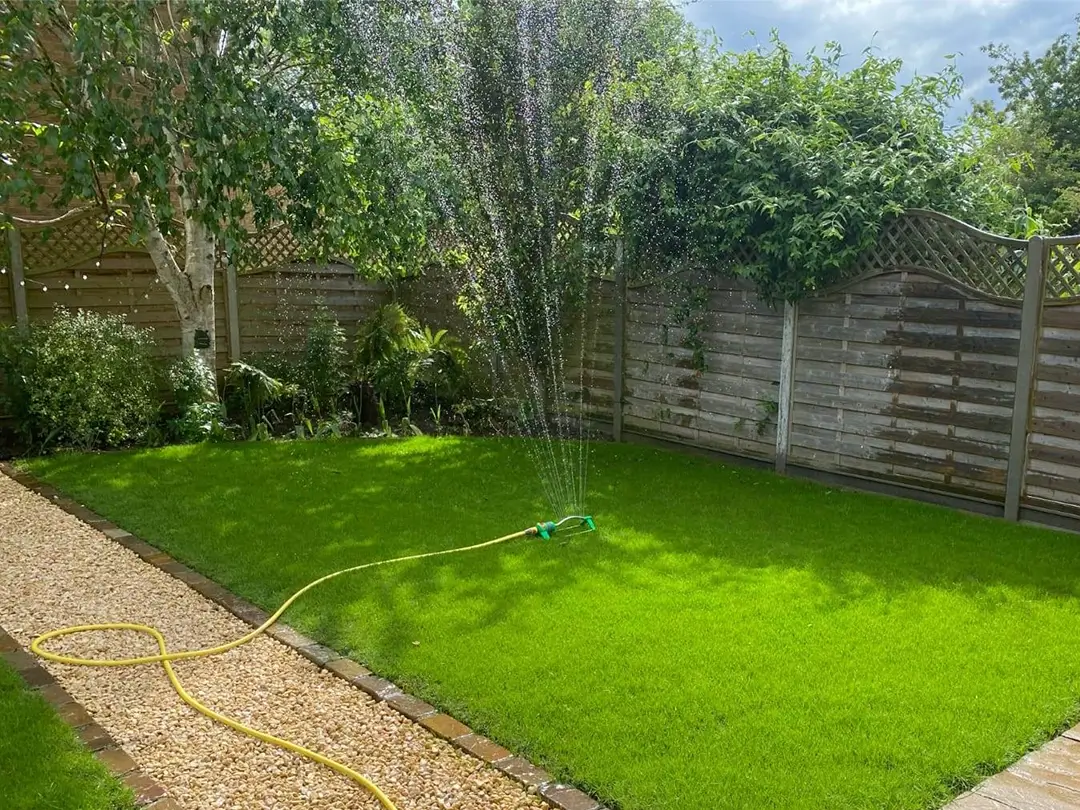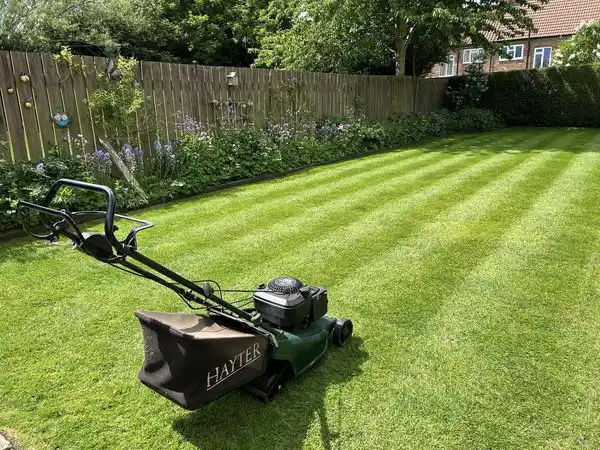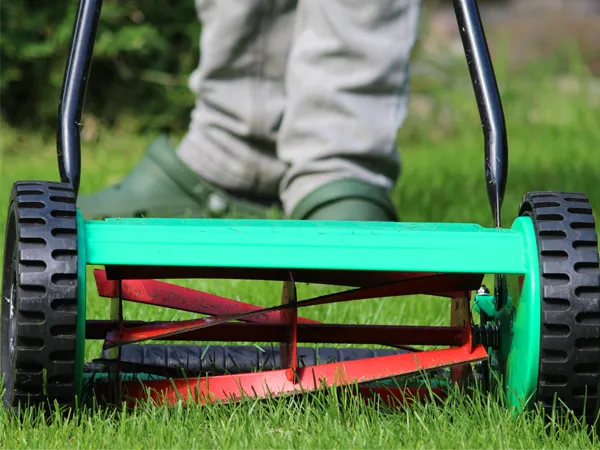A guide to keeping your lawn healthy throughout summer
Last Updated: 04/07/2025
Over the past few weeks, many areas of the UK have experienced high temperatures. Whilst this has been welcomed by many, our lawns can often suffer through prolonged periods of dry, hot weather without rainfall.
With this in mind, there's two things that need to be considered to help keep your lawns healthy; correct mowing and adequate watering.
Mowing Your Lawn
For many people, the height of cut is a matter of personal preference. However, it is a matter of fact that you shouldn't cut below a certain height.
All lawn grasses are weakened and more susceptible to disease occurrence when cut to a lower height, so it's important to avoid this as best as possible.
Most lawns should never be cut to less than a height of 25mm (about 1 inch). This height is more than adequate for any homeowners use as the only turf areas that need to be cut to a lower height than this are professional sports grounds, such as bowling greens and golf greens.

How Do I Know What Height Settings to Use on My Mower?
Every mower is different, but you will naturally identify the correct height as you cut your lawn on a regular basis. Regardless of your mower, and its type, a good rule of thumb is to never cut more than a third of the grass leaf off at a time.
If your lawn is very long, set your mower as high as possible, and cut the lawn in multiple directions. Do not be tempted to cut all of the length in a single pass, as you will otherwise likely cause Leaf Spot disease to occur. The lawn will show signs of stress in doing so.
Most domestic lawns in the UK have a mix of fine fescue grasses and ryegrasses, and the mowing requirements vary, but following this advice will always ensure they are well kept to a suitable height, regardless of your lawn's grass mixture.
How Often Should I Cut My Lawn?
Quite simply, you should mow your lawn as often as it requires it throughout the growing season.
Most lawns will generally require mowing on a weekly basis from spring, all the way through summer and into autumn.
In the summer, the best approach is little but often, by which we mean cut it regularly, but remove little height. This approach is the least stressful to the lawn, and ensures an adequate amount of grass leaf remains to help retain moisture.
What Lawn Mower Is Right for Me?
There's a few different types of lawn mowers. If you are thinking of purchasing a new mower, here is some simple advice:
Cylinder mowers - Are appropriate for large lawns with flat surfaces, but are not appropriate for small lawns with banks and awkward areas to negotiate and manoeuvre around. Cylinder mowers are best suited for close mown turf and are very expensive. They must also be serviced regularly to ensure they complete a good job.
Rotary mowers - Are ideal for smaller lawns as they are more lightweight and manageable to turn. They are also appropriate for any small banks on your lawn, providing you raise the cutting height. They leave a reasonable finish and are relatively inexpensive.
Rotary mowers with a rear roller - Are good for most sized lawns as they are usually high speed, yet not too large to negotiate around smaller areas. The main difference with this type of mower is they are usually self-propelled and include a rear roller which leaves a fantastic finished appearance. If you like the look of a checkerboard pattern, then it's worth spending a little more to buy a mower like this.
Check Your Lawn Mower
You should check the condition of your lawn mower every year, and have it maintained appropriately to ensure that your lawn is cut to the highest standard. Failure to service blunt blades will result in your grass turning yellow after cutting and will also allow lawn diseases to develop more easily.
All the advice above will not count for anything if you are using a mower with blunt blades or insufficient power.
Watering Your Lawn
Many people often forget that grass is a plant, and just like the plants in your borders, grass needs frequent and adequate water in order to survive.
Failure for your lawn to receive enough water will result in a brown patchy lawn that is stressed and unable to survive.
If you are watering your flowers and baskets, please remember that your lawn is a plant too, and therefore it requires just as much water.

Best Time of Day to Water Your Lawn
There are no specific rules on when you should water your lawn at certain times of the day, but to get the most use out of water, it is best to avoid watering in direct sunlight.
Watering in the morning is the best option if possible, as the water will not evaporate as quickly, as the temperature is cooler.
Alternatively, watering in the evening also ensures good use of the water, but don't saturate your lawns, as it can increase the outbreak of Red Thread disease in humid conditions.
Many customers take advantage of our wetting agent treatments as they help make better use of the water, by helping it penetrate through the soil profile, instead of allowing it to dry on the surface.
Watering After Lawn Treatments
After scarification, your lawn should be kept damp with regular rainfall or watering, to help aid recovery of the lawn.
If we have applied a granular fertiliser, the fertiliser requires a certain amount of moisture to start breaking down and working. In spring and autumn, this is usually not an issue as frequent rainfall and sufficient morning dew is enough to break down the fertiliser. However, in summer, in days of hot, humid weather, some water may be required on your part.
If we over-seed your lawn, the lawn needs to be kept wet on a daily basis sufficiently enough so that the seed will germinate and grow into healthy grass.
If you use our Regener8 lawn process, it is crucial that you water your lawns daily until full germination and growth is achieved. This is typically for around 6-8 weeks. It is recommended that for the best results from the Regener8 service, a sprinkler should be used to give a larger spread for the water out of a hose pipe.
Our Regener8 Information & Aftercare Guide, which is included for free with a Regener8 quotation, explains watering advice in more detail.

Sprinklers
Sprinkler systems can be purchased from DIY stores and moved around your lawns periodically to provide water to all of your lawn area. These can also be combined with the use of water timers to avoid flooding and help monitor water usage, if you're home has a water meter installed.
If you are unsure about the type or model that will suit your lawn, please ask your local Lawn Master representative and they can advise you.
Written by Lawn Master Head Office. 25 Years of Professional Lawn Care Services
About Lawn Master
For the past 25 years, Lawn Master has been providing professional lawn care services and expanding across the UK with a big difference. The difference being that we insist that all of our franchisees are pre-experienced turf industry professionals.







